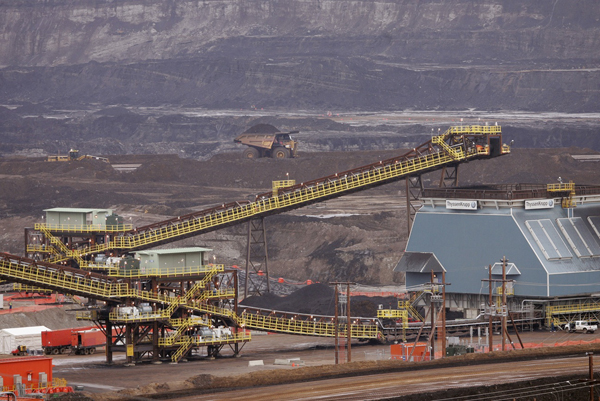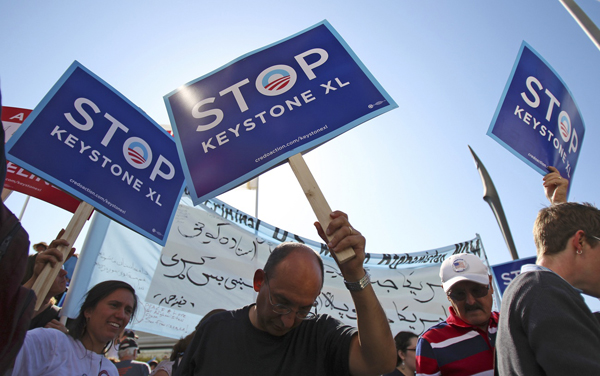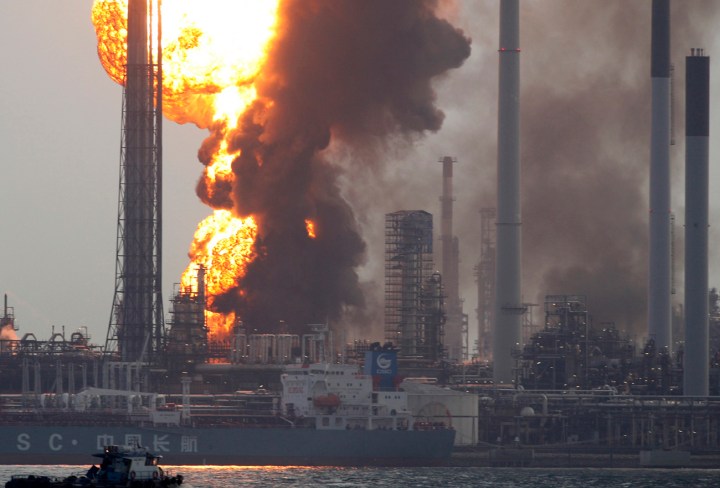A shift is coming with regards to the supply and politics of world oil. The new black gold is going to be expensive and hard to get at properly. However, growing stability in a place like Libya, as well as big oil reserves in difficult-to-reach spots, means more oil will start to come on line. By J BROOKS SPECTOR.
If one remembers back far enough, America was both the world’s major oil producer and its most prominent exporter. During the Second World War, America was a key exporter of refined petroleum to allied armies around the world. In the post-World War II world economy, the balance of production shifted to the nations of the Middle East and major international political strategic decisions were based on forecasts that predicted the world’s reliance on Middle East oil supplies was a foregone conclusion. Forever was the word.
As oil market specialist Daniel Yergin (head of IHS Cambridge Energy Research Associates and the author of “The Quest: Energy, Security, and the Remaking of the Modern World”) explains, “This seemingly irreversible reality has shaped not only US energy policy and economic policy, but also geopolitics and the entire global economy.” And this was true since the 1970s, from the time of the oil sales boycott by OPEC that was linked to the Yom Kippur War between Israel and the Arab nations of Egypt and Syria.
More recently, an important development for Americans – and others – was the rapid and relatively unexpected flowering of West Africa as a major petroleum-exporting region. While Nigeria has been an oil-producing nation for decades, nations like Angola, the DRC, Gabon, Equatorial Guinea, Sao Tome and Principe, Congo-Brazzaville and Ghana have all joined in as oil exporters from the 1980s onward – often from what were zero baselines.
When this writer taught international relations just a few years back, the next big thing for US international energy policies was the rapid increase in oil imports from West Africa. That was reshuffling the broader strategic picture and making West Africa an increasingly important region for the US – after years of being a strategic backwater. Together with growing concerns over famine, flood, pestilence, regional instability and international non-state terrorism, among other little things, this new oil-producing region helped bolster the rationale for a regional African Command in the US military establishment.
But technological advances – and the implacable demand for petroleum-based products – are now reshaping a long stretch of the western hemisphere as the next big thing for oil – and a whole new series of oil rushes. Yergin notes some of the key features of this new development, writing:
“The outline of a new world oil map is emerging, and it is centered not on the Middle East but on the Western Hemisphere. The new energy axis runs from Alberta, Canada, down through North Dakota and South Texas, past a major new discovery off the coast of French Guyana to huge offshore oil deposits found near Brazil. This shift carries great significance for the supply and the politics of world oil. And, for all the debates and speeches about energy independence throughout the years, the transformation is happening not as part of some grand design or major policy effort, but almost accidentally.”
A generation earlier, any discussion by the US Government for a “hemispheric energy” had two key pillars. The first one was Venezuela, an oil exporter to the US since the Second World War. The other was Mexico, where the oil boom had fundamentally transformed the country from a net importer to a large exporter.
However both nations have seen major changes in the past few years – trends likely to continue. In Venezuela, since Hugo Chavez took power, output has dropped by a quarter and the country may not be that “reliable pillar” for the US when Chavez denounces the US as “the biggest menace on our planet” and he aligns Venezuela with Iran as a natural ally. Meanwhile, Mexico depends on oil for over a third of its government’s total revenue, but it is facing declining output and may become a net importer as early as the end of the current decade.
In contrast, the new outlook for the western hemisphere oil resources is anchored by sources that were not part of the oil game until recently. And they have only become possible because of technological breakthroughs. These include the Canadian “oil sands”, “pre-salt” deposits in Brazil and the so-called “tight oil” in the United States.

Heavy equipment mines the oil tar sands at Syncrude’s Aurora mine near Fort McMurray, Alberta in this May 23, 2006 file photo. REUTERS/Todd Korol
In the past decade, the Canadian oil (or tar) sands have shifted from being a fringe resource much talked about but little accessed to a major source. These deposits are heavy oil mixed with clay and sand and the oil is so heavy – think industrial grade, cold, syrupy, super chilled molasses – that it must be separated from the matrix that holds it to be refined and that has required some serious engineering advances in the past decade and a half. At this point, Canada now produces a million and a half barrels of oil per day – more than Libya exported by time of the recent rebellion and war. Analysts argue it could double production by 2020. If that happens, Canada would become the globe’s fifth largest producer – behind Russia, the Saudis, the US and China. Not particularly surprisingly, exploitation of the product of these oil sand deposits has become controversial, not least for the proposed 2,500 kilometre-long Keystone XL pipeline to bring the oil from Alberta to the Texas coast – and thence onward to the refineries and onward shipping points.
A decision by the Obama administration on this pipeline is still pending, and a key opposition argument to full exploitation is the large amount of carbon dioxide that would be released, as oil sands exploitation produces between 5-15% more gas than the average oil in the refining process. Even so, this new reserve is already making a contribution to considerations of energy security policies. And, as it is, nearly a quarter of all oil imports in the US already comes from Canada, rather than any individual Middle East nation.
Meanwhile, the other major part of the new hemispheric oil axis is Brazil. As readers may recall, the country first focused on ethanol from sugar cane when it was thought Brazil had no significant petroleum reserves. But, as things have turned out, Brazil actually has a great deal of oil. New technology has made it possible to exploit these resources located below a kilometre and a half belt of salt. A key breakthrough was some fancy mathematics that helped identify the oil layer below the salt – from heretofore-unreadable seismic data. Projections now are that Brazil will be delivering twice Venezuela’s current output by the end of the decade – feeding local consumption and exports to the US and elsewhere.
Finally, the third new development is shale gas technology, otherwise called “fracking”, and the extraction of the oil from the layers of dense rock. As a result of this exploitation, North Dakota – North Dakota! – is now the fourth-largest oil producing state in the US – and the state with the country’s lowest unemployment levels. Tight oil, as it is sometimes called, production could reach three million barrels a day – one third of the country’s total oil production. This, of course, is based on exploitation that isn’t halted or limited because of some of the very real environmental objections over fracking.
Despite the possibility of environmental objections in parts of the country that are more densely populated like Pennsylvania, Yergin argues that these three developments – Canada, Brazil, and oil shale – will alter the global flow of oil for years to come. While western hemisphere nations will still require supplies from the rest of the world, the levels will likely come in nowhere near the amounts forecast just a few years ago. And the numbers will decline further, if new, more energy efficient or electric vehicles come on-stream in large numbers as well. Yergin predicts – optimistically perhaps – that the need for imports from beyond the hemisphere could fall by as much as half by 2020, and that means declining imports from the Middle East and West Africa.
Oil would then flow in larger amounts to – unsurprisingly – the emerging markets of Asia. China now consumes half as much oil as the United States and may overtake America as the world’s largest oil consumer by 2020. And that poses a truly interesting geopolitical question: if Asian economies have an increasing stake in the stability of Mideast oil suppliers because they depend on it so much, how will global responsibilities for stability and security in the Persian Gulf region be apportioned and carried out?
Meanwhile, in the here and now, oil corporations and related companies are already jockeying for places to get to the head of the queue to rebuild, expand and renovate Libya’s oil and natural gas industry. The truly tantalising feature of this new frontier is that Libya actually has the resources to pay for this refit, rather than relying upon foreign assistance to make it happen. And then, it must be said, there is the intangible but probably real factor that the new rulers in Tripoli have a certain gratitude towards the Nato nations. The Washington Post recently reported that even before “Colonel Gaddafi’s death on Oct. 20, a delegation from 80 French companies arrived in Tripoli to meet officials of the Transitional National Council, the interim government. Last week, the new British defense minister, Philip Hammond, urged British companies to ‘pack their suitcases’ and head to Tripoli.”

A group of demonstrators rally against the controversial Keystone XL oil pipeline outside President Barack Obama’s fundraiser at the W Hotel in San Francisco, California October 25, 2011. The 1702-mile, $7 billion pipeline, built to transport crude oil from the Canadian oil sands in Alberta to its eventual stop in Texas, is facing strong opposition from environmentalists and politicians for its long-term environmental impacts across various Midwestern states. REUTERS/Stephen Lam
One British company, Trango, has already posted on its website that “Whilst speculation continues regarding Gaddafi’s killing, are you and your business ready to return to Libya?” Trango was offering rooms at its special Tripoli villa and ground transport by a mixed British and Libyan security team – including a ride from the airport that clocked in at the tidy sum of $800. Maybe a discreet word to Santaco would encourage some entrepreneurial activity up north?
The Post report explains that while there is enthusiasm, there is also some real hesitancy on both sides to rush right in. The National Transitional Council has already said no long-term contracts will be signed until an elected government is in place, in an effort to avoid some of the corruption, backhanding and gate keeping that became a hallmark of the Gaddafi regime.
And in any case, with thousands of jobless, well-armed young men, the country is not yet a stable, secure environment for the fearful. Of course oil companies operate in the Nigerian delta, so probably anything is possible. Moreover, France, Britain and the US may well benefit from the victory over Gaddafi and the new authorities’ appreciation for the help. That may be enough to elbow out, say, the Chinese who were arms sellers to Gaddafi, and get something going. Western business had been operating in Libya during the Gaddafi years, but the lead oil companies tended to come from Spain, Italy and France, rather than the US or the UK. Analysts now say that after years of neglect, let alone the damage from the civil war, Libya probably needs one of everything, so there’s lots to do.
Given the opportunities, the battle for Libyan business activity is already showing up on the internet as well. On the LinkedIn business connection site, one can already read notes like “can anyone in the group tell me if there are flights into Tripoli?” as well as “what is the situation for business visas for business travellers?” from European-based oil engineering specialists. To this particular call came a response from a Libyan who said he was working in business development. His advice? “Hi friends, you are all welcome to Libya. Just make sure you go through the proper channels for your work contracts and don’t get involved in bribes, inducements or sweeteners to officials. Remember we have free media now.”
The world is clearly not awash in surplus oil; but, increasingly, the new black gold is going to be expensive and hard to get at properly. However, growing stability in a place like Libya, as well as big oil reserves in difficult-to-reach spots, means more oil will start to come on line. Taken together, this could give all of us just a bit more time to ratchet up those consumption efficiencies – as well as to make real and effective use of all those alternative and renewable energy sources we keep arguing about. DM
Read more:
- Oil’s new world order in the Washington Post;
- Western Companies See Prospects for Business in Libya in the New York Times;
- Department of Energy website for data on worldwide production historically.
Photo: Smoke and flames engulf the Royal Dutch Shell’s Pulau Bukom offshore petroleum complex in Singapore September 28, 2011. A fire at Royal Dutch Shell’s petroleum complex offshore Singapore has intensified, a senior company official said. REUTERS/Edgar Su







 Become an Insider
Become an Insider